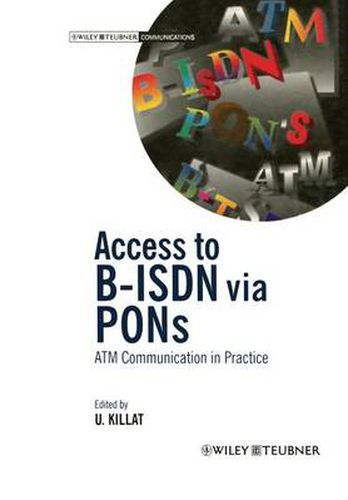Readings Newsletter
Become a Readings Member to make your shopping experience even easier.
Sign in or sign up for free!
You’re not far away from qualifying for FREE standard shipping within Australia
You’ve qualified for FREE standard shipping within Australia
The cart is loading…






This title is printed to order. This book may have been self-published. If so, we cannot guarantee the quality of the content. In the main most books will have gone through the editing process however some may not. We therefore suggest that you be aware of this before ordering this book. If in doubt check either the author or publisher’s details as we are unable to accept any returns unless they are faulty. Please contact us if you have any questions.
It is with great pleasure that I respond to the kind invitation of the BAF project to contribute prefatory remarks to this account of their work, carried out under the auspices of the RACE Programme (Research and Development in Advanced Communications in Europe). The objective of the RACE Programme was to support the intro duction of Integrated Broadband Communications in the European Union. An important part of this overall objective was served by the BAF project, which has aimed to produce a cost-effective access facility for broadband networks, especially for residential and small business customers. As this book relates, in order to do so the project consortium merged two advanced communications technologies, ATM and PON, with contributions from many other disciplines, to create a demon strator which has been subject to extensive trials and testing which have been fruitful both in contributions to international standards and in development work to improve further future generations of the system. This book forms an important reference source through the experience gained in this unique experiment in advanced telecommunications. Another significant feature of the project should not be overlooked however. When the European Commission first began looking at supporting industrial research in Europe in the mid-1980s, it was clear that we had important strengths in telecommunications. It was equally clear that a revolution was on the way - the digital revolution - and European pre-eminence in the field was not guaranteed for ever.
$9.00 standard shipping within Australia
FREE standard shipping within Australia for orders over $100.00
Express & International shipping calculated at checkout
This title is printed to order. This book may have been self-published. If so, we cannot guarantee the quality of the content. In the main most books will have gone through the editing process however some may not. We therefore suggest that you be aware of this before ordering this book. If in doubt check either the author or publisher’s details as we are unable to accept any returns unless they are faulty. Please contact us if you have any questions.
It is with great pleasure that I respond to the kind invitation of the BAF project to contribute prefatory remarks to this account of their work, carried out under the auspices of the RACE Programme (Research and Development in Advanced Communications in Europe). The objective of the RACE Programme was to support the intro duction of Integrated Broadband Communications in the European Union. An important part of this overall objective was served by the BAF project, which has aimed to produce a cost-effective access facility for broadband networks, especially for residential and small business customers. As this book relates, in order to do so the project consortium merged two advanced communications technologies, ATM and PON, with contributions from many other disciplines, to create a demon strator which has been subject to extensive trials and testing which have been fruitful both in contributions to international standards and in development work to improve further future generations of the system. This book forms an important reference source through the experience gained in this unique experiment in advanced telecommunications. Another significant feature of the project should not be overlooked however. When the European Commission first began looking at supporting industrial research in Europe in the mid-1980s, it was clear that we had important strengths in telecommunications. It was equally clear that a revolution was on the way - the digital revolution - and European pre-eminence in the field was not guaranteed for ever.